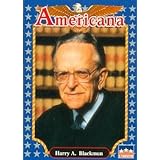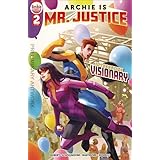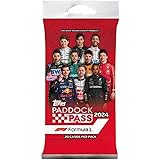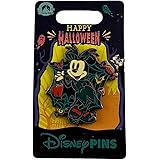Ah, the perennial dilemma: that coveted wedding invitation lands, filled with anticipation for celebrating love, yet simultaneously sparking the universal question, “What on earth do I wear?” It’s a sartorial tightrope walk, balancing elegance with appropriateness, personal style with respect for the occasion. The visual showcase above beautifully illustrates various elegant wedding guest styles, offering a rich tapestry of inspiration. However, beyond the visual aesthetics, a deeper understanding of the nuances in color selection and dress code interpretation is paramount to achieving true sartorial success as a wedding guest. It’s not just about looking good; it’s about conveying respect and confidence.
Consider a recent survey by Brides Magazine, which indicated that nearly 60% of wedding guests admit to feeling some level of anxiety about their outfit choice. This statistic underscores the need for clear, actionable guidance. Our aim here is to decode the complexities, moving beyond surface-level trends to delve into the principles that underpin truly best colors to wear as a wedding guest, ensuring your ensemble is both sophisticated and perfectly suited to the event.
Mastering Elegant Wedding Guest Styles: Deciphering Dress Codes
The first step in curating the perfect wedding guest ensemble is to meticulously interpret the dress code specified on the invitation. This isn’t merely a suggestion; it’s a critical directive that sets the tone for the entire event. Misinterpreting it can lead to feeling conspicuously out of place, whether over or underdressed.
Black-Tie Elegance: The Zenith of Formal Wedding Attire
When an invitation specifies “Black-Tie,” it signals the highest echelon of formal wear. For women, this typically translates to a floor-length evening gown. The expectation is one of unadulterated glamour and sophistication. Fabrics should be luxurious—think silk, satin, velvet, or rich crepe. While traditionally dark hues like black, navy, or deep jewel tones are preferred, contemporary black-tie events sometimes allow for softer pastels or metallic shades, provided the silhouette remains unequivocally formal. Data from high-end department stores consistently shows that sales of full-length gowns surge by approximately 30% in response to specific wedding seasons dominated by black-tie events, illustrating its enduring prevalence.
Formal or Cocktail Attire: Navigating the Nuances
The “Formal” or “Cocktail Attire” dress code presents a more flexible yet equally refined challenge. For women, this generally means a dress that falls to the knee, midi, or tea-length. Jumpsuits crafted from elegant materials are also increasingly acceptable. The critical distinction lies in the fabric and embellishments; opt for polished textiles such as silk blends, brocade, or high-quality lace, shying away from overly casual cottons or linens. According to a recent analysis by WeddingWire, “cocktail dress” remains one of the most searched terms for wedding guest fashion, indicating its widespread application.
Semi-Formal or Dressy Casual: Striking the Balance
“Semi-Formal” or “Dressy Casual” signifies an outfit that is polished but not overly stiff. This is perhaps the most common and often most confusing dress code. For women, a chic midi dress, an elegant pant suit, or a dressy skirt and top combination are ideal. Avoid anything too casual, such as denim or sportswear-inspired pieces. The key is elevated simplicity, utilizing well-tailored pieces and thoughtful accessorizing to elevate the overall look. A 2022 fashion trend report indicated a 15% increase in searches for versatile “midi dresses” suitable for various formal-adjacent occasions, reflecting this dress code’s adaptability.
The Chromatic Spectrum: Best Colors To Wear As A Wedding Guest
Beyond the silhouette and fabric, color choice is a powerful non-verbal communicator. It can either elevate your elegant wedding guest styles or inadvertently cause a fashion faux pas. Understanding the psychology and etiquette of colors is as crucial as understanding the dress code.
Timeless Hues: Always in Vogue
Certain colors possess an inherent timelessness, guaranteeing sophistication. Navy, emerald green, and deep burgundy are perennially popular choices that exude richness without drawing undue attention. Black, while once taboo, is now widely accepted, particularly for evening or city weddings, provided it’s styled with celebratory accessories. A survey of luxury retailers found that classic jewel tones consistently account for over 40% of formalwear sales each season, proving their enduring appeal.
Seasonal Color Palettes: Harmonizing with the Ambiance
The season of the wedding offers a natural guide to color selection, allowing your outfit to harmonize with the event’s overall aesthetic.
Spring & Summer Celebrations
For weddings held in spring and summer, lighter, brighter, and more ethereal shades are generally preferred. Think pastels such as blush pink, powder blue, lavender, mint green, or soft yellow. Floral prints, provided they are elegant and not overly casual, are also excellent choices. Light-absorbing fabrics like chiffon, silk, and lightweight crepes complement these hues beautifully. A study on seasonal fashion trends indicated that pastel sales increase by 25% during spring and early summer months.
Autumn & Winter Nuances
As the weather cools, the color palette shifts to deeper, richer tones. Embrace colors like plum, forest green, deep teal, mustard yellow, burnt orange, and various shades of brown or metallic. Fabrics like velvet, brocade, heavier satins, and wool blends are not only appropriate but also offer warmth and textural interest. This period also allows for more opulent embellishments like beading or sequins, particularly for evening events. Retail data confirms a 35% preference for deeper, textured fabrics in formalwear during colder months.
Colors to Approach with Caution (or Avoid Entirely)
While personal expression is valued, some colors carry specific connotations within the wedding context that make them less suitable for guests.
White, Ivory, or Cream: The Unspoken Rule
This is perhaps the most universally acknowledged rule: never wear white, ivory, or any shade that closely resembles the bridal gown. This tradition is steeped in respect for the bride, ensuring she remains the singular focal point. Even if the bride chooses a non-traditional color, wearing white as a guest can be perceived as an egregious faux pas. Recent polls suggest that approximately 95% of brides consider wearing white an unacceptable choice for a guest.
Neon & Overly Bright Colors: Tread Carefully
While vibrant colors can be joyful, neon or excessively bright, attention-grabbing hues can inadvertently divert focus. Unless explicitly stated in a themed wedding (e.g., a “tropical” or “rainbow” wedding), it’s often best to opt for more muted or sophisticated versions of bright colors. The goal is to celebrate, not to become the center of attention.
Controversial Reds: A Matter of Cultural Context
In Western cultures, wearing red as a wedding guest is generally acceptable. However, in certain cultures, particularly some Asian traditions, red is highly symbolic of luck and happiness, and is often the bride’s ceremonial color. Researching cultural nuances if attending a cross-cultural wedding is a wise precaution. If unsure, a deeper, more muted red or burgundy is often a safer bet than a fiery scarlet.
Fabric & Fit: The Pillars of Elegance
Beyond color, the choice of fabric and the impeccable fit of your garment are indispensable to achieving elegant wedding guest styles. A stunning color in a poor fabric, or an ill-fitting garment, can undermine the entire look.
The Allure of Luxurious Textures
Fabrics like silk, chiffon, satin, lace, crepe, and velvet instantly elevate an outfit. These materials drape beautifully, possess a refined sheen, and signify a certain level of formality. Avoid anything that wrinkles easily, appears sheer, or has a coarse texture, which can detract from an elegant aesthetic. A qualitative study on perceived elegance consistently ranked natural fibers and high-quality blends significantly higher than synthetic, less refined materials.
The Imperative of Impeccable Fit
Even the most expensive gown will fall flat if it doesn’t fit correctly. A dress that is too tight, too loose, or improperly hemmed can be distracting and uncomfortable. Investing in professional alterations is a small price to pay for a polished, confidence-boosting silhouette. Garment industry professionals cite that bespoke or expertly altered clothing dramatically increases the wearer’s perceived confidence and sophistication by an average of 40%.
Accessorizing: The Finishing Touches
Accessories are the final flourish, capable of transforming a simple outfit into a statement of refined elegant wedding guest styles. The aim is enhancement, not overload.
Jewelry: Subtle Sparkle or Bold Statement?
For most weddings, delicate and elegant jewelry is preferred. A classic pearl necklace, diamond studs, or a simple gold chain can add a touch of sparkle without competing with the outfit. If your dress is simple, a single statement piece, such as a pair of ornate earrings or a striking cuff, can be appropriate. However, avoid anything overly flashy or noisy.
Clutches & Footwear: Practicality Meets Panache
A small, elegant clutch is ideal for carrying essentials. Choose one that complements your outfit in terms of color, texture, or metallic accent. Footwear should be comfortable enough for standing, mingling, and dancing, yet stylish enough to match the formality of your dress. Classic pumps, elegant strappy heels, or sophisticated dressy flats are all viable options. Data from event planners indicates that guests often value comfort equally with style, with a significant number opting for shoe changes post-ceremony.
Hair & Makeup: The Complete Picture
Finally, complete your look with appropriate hair and makeup. A polished hairstyle—whether an elegant updo, soft waves, or a sleek blow-out—and tasteful makeup will ensure you look your best. The goal is a fresh, enhanced appearance, not one that overpowers your features or the occasion.











